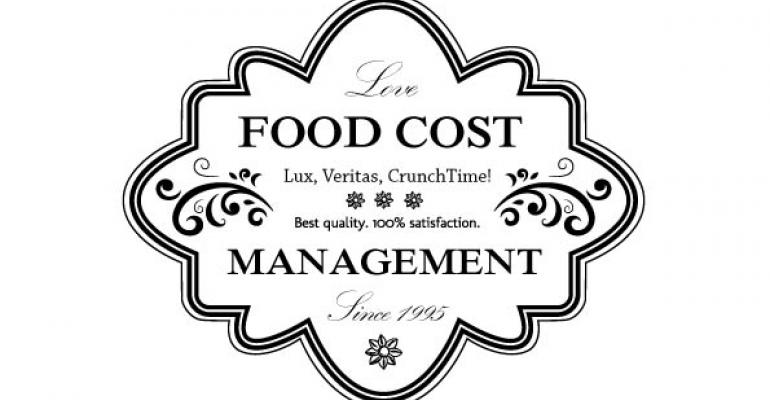Achieving better food cost management in a restaurant chain is simple, but it's not easy. It's a little like getting in shape; to do that, all you have to do is eat better and exercise more. Of course having a plan helps... a lot. In that spirit, the following are two simple things restaurant operators can plan to do to achieve better food cost management.
- Plan your production
Don’t guess about how much food to prep. Over-prepping leads to excess inventory and waste, which then turns into higher food costs. Under-prepping can cause stress as supplies run short, and may spur an emergency production run, which often creates too much food that subsequently turns to waste!
Veteran managers may be tempted to "go with their gut" when deciding how much to prepare, but experience shows it's better to do detailed production planning by creating a forecast based on historical data, and to do so every day. With the proper tools it can be done quickly, and the payoff is substantial.
- Track your waste
Knowing what ends up in the trash is worth as much as knowing what ends up on a plate. When food costs are too high, the goal is to determine if the cause is:
- Prices paid
- Data error (e.g.: inaccurate receiving or invoicing)
- Operational error (like improper recipe prep, portioning, and WASTE)
Accurate waste tracking tells the manager if waste is a problem or allows her to quickly zero in on other operational issues. Tracking waste in both cases ultimately saves a restaurant operation time and money.
However, accounting for wasted recipes (vs. individual ingredients) can be tricky. For example, if someone drops a container holding 12 servings of Chicken Soup, there are three options:
- Look up the recipe for chicken soup, determine the amount of each ingredient in 12 servings, and record each amount as individually wasted product.
- Don't record it
- Use a restaurant back office solution that "knows" the ingredients in 12 servings of soup, and simply enter: "12 Servings of Chicken Soup" as waste. The system will automatically deduct the correct amount of individual ingredients from inventory, and mark it as wasted.
Important: Because the third option is easy, it's likely to get done in the fast paced environment of a restaurant. The second option is easier still (and quite popular) but it won't help with food cost management.
These two steps aren't a lot more complicated than eating less and exercising more... simply prepare a production plan and keep track of what's wasted, every day, and you've taken two major strides towards better food cost management.
Reach out to us at www.crunchtime.com – to learn more.




